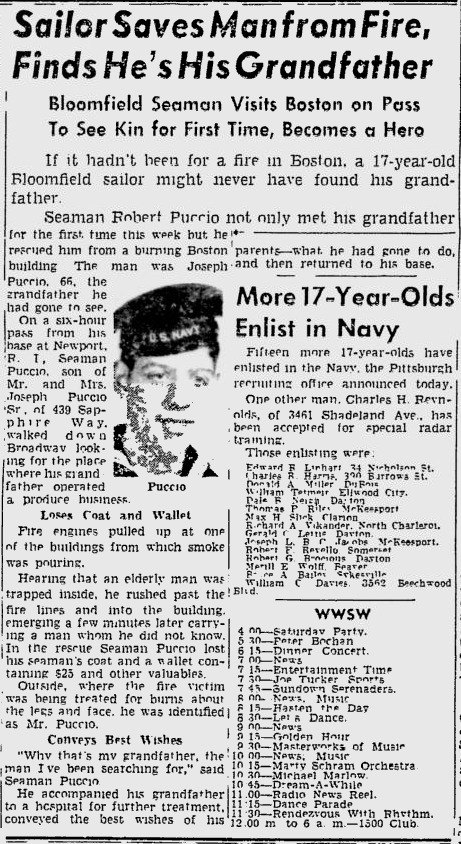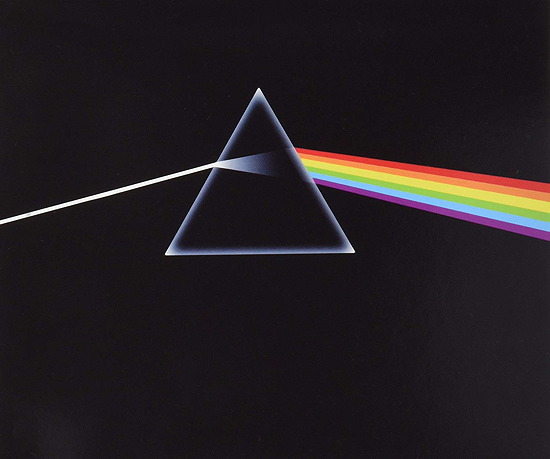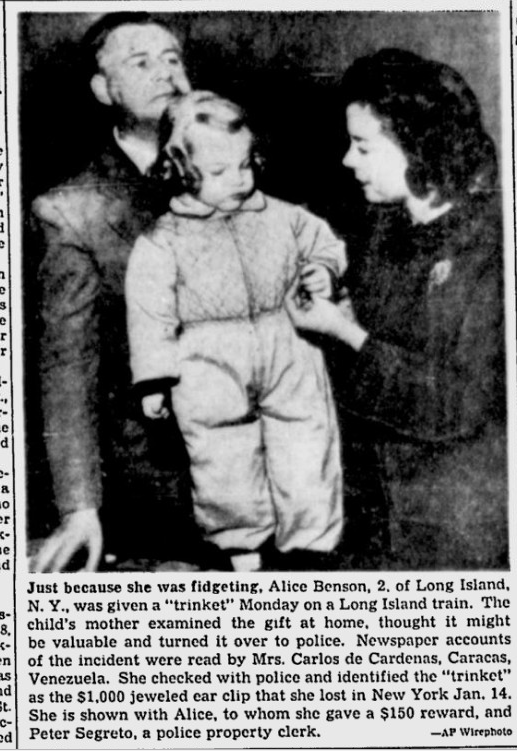Synchronicity and Coincidence
Killer Tree


Posted By: Paul - Tue Sep 03, 2024 -
Comments (2)
Category: Death, Highways, Roads, Streets and Traffic, Nature, Synchronicity and Coincidence, 1960s
Weird Coincidence Survey
Dr. Bernard Beitman spent his career as a psychologist researching the relationship between chest pain and panic disorder, but since he retired he's taken up the study of coincidences.He founded the Coincidence Project, recently completed a book (Meaningful Coincidences: How and Why Synchronicity and Serendipity Happen), and has a "Weird Coincidence Survey" that you can take to gauge how sensitive you are to coincidences.
From an article about him in the LA Times:
People who describe themselves as spiritual or religious report noticing more meaningful coincidences than those who do not, and people are more likely to experience coincidences when they are in a heightened emotional state — perhaps under stress or grieving.
I don't consider myself spiritual, but, for whatever reason, I have strange coincidences happen to me all the time. I guess I'm sensitive to them. One minor example that Paul and I have noticed is the way our posts occasionally synchronize with each other (in terms of their subject matter) despite the fact that we never know what the other is going to post.
Or one of us will post about something the other has been reading about, such as the time that I prepared a post about the obscure corporate mascot "Peter Pain," while 3000 miles away Paul happened to be reading about Peter Pain in a book.
Posted By: Alex - Fri Dec 02, 2022 -
Comments (2)
Category: Synchronicity and Coincidence
Jaw Winking
In his 1973 book Thick Description, the anthropologist Clifford Geertz used the example of winking versus twitching to explain what it is that anthropologists should strive to do.An eye twitch and a wink can look identical. But a wink, Geertz explained, is an intentional signal. "To wink is to try to signal to someone in particular, without the cognisance of others, a definite message according to an already understood code." A twitch, on the other hand, is not intentional. It's not meant to convey meaning.
The job of the anthropologist, Geertz argued, was not merely to record facts and events (such as that a person's eye moved) but to be able to interpret the cultural meaning of those events. To be able to differentiate a wink from a twitch.
With that in mind, consider this story reported in the Miami Herald (Apr 30, 1939) about a young man whose eye twitches were constantly misinterpreted:
Such a case was reported some years ago by Dr. Francis C. Grant, an eminent neurologist of Philadelphia, Pa. He had a patient—a young man—whose left eye continually winked every time he sat eating at a table.
Whenever this youth dined in a restaurant, his jaws worked sidewise while chewing food. This caused his right jaw muscles to tug at the muscles controlling his left eye, so that every time he chewed his left eye seemed to wink.
Girls believed the youth was flirting with them. They responded, if flirtatious, or, if not, complained to the manager. In either case, the youth was embarrassed by his muscular malady.
Finally, he was compelled to eat alone at home. He was on the verge of becoming a hermit when he decided to consult Dr. Grant. Examination revealed the "short circuit" cause of his strange "jaw wink" and an operation was performed. The muscles, restored to normal action, ended the distressing condition and the youth could eat normally thereafter.
What I find odd is that I came across these two bits of information (first about Geertz, and second about the jaw-winking young man) while reading completely unrelated texts on back-to-back days. A strange coincidence!
You can read more about Geertz's thoughts on winking and twitching here.
You can read more about 'jaw winking' (aka Marcus Gunn Syndrome) at rarediseases.org.
Posted By: Alex - Thu Sep 08, 2022 -
Comments (1)
Category: Synchronicity and Coincidence, Eyes and Vision
Watch out for falling babies
While Joseph Figlock was walking down the street, minding his own business, he twice had a baby fall from an overhead window onto his head. It first happened in 1937, and then again in 1938.Bad luck for him, but good luck for the kids who landed on him.

Detroit Free Press - Sep 28, 1938
Posted By: Alex - Sun Sep 04, 2022 -
Comments (2)
Category: Babies, Synchronicity and Coincidence, 1930s
Redhead Cluster Phenomenon
Peter Watson, in his book Twins: An Investigation Into the Strange Coincidences in the Lives of Separated Twins, related the following story:This tendency of red-haired men to be seen in clusters is known as the "Redhead Cluster Phenomenon". I'm not sure if it applies to red-haired women as well.
More info about it can be found at the site RhCP, created by Toronto journalist Joe Clark.
Posted By: Alex - Thu Jun 02, 2022 -
Comments (3)
Category: Synchronicity and Coincidence, Hair and Hairstyling
Family Reunion

Source (page 14).
Posted By: Paul - Thu Nov 19, 2020 -
Comments (2)
Category: Destruction, Family, Injuries, Synchronicity and Coincidence, 1940s
Dark Side of the Rainbow
For those who may not have heard of this classic urban legend of music, Jan Dirk Blom provides this explanation in his Dictionary of Hallucinations:It is not known who first established this pattern of thematic similarities, but from 1994 onwards it was widely discussed on internet sites such as the Usenet message board alt.music.pink-floyd and in the popular media.
As the Pink Floyd band members (save Roger Waters) have always denied deliberate attempts to synchronize their album with the movie, the Dark Side of the Rainbow is commonly designated as a cognitive illusion and attributed to a process called apophenia, i.e. an excess of perceptual or heuristic sensitivity leading to the discernment of patterns or connections in random or meaningless data.
If you're curious to experience this phenomenon for yourself, someone has helpfully posted the entirety of the Wizard of Oz on YouTube, synced to Dark Side of the Moon.
Though this raises the biggest problem with the theory: Dark Side of the Moon is about 43 minutes long, while the Wizard of Oz is over an hour long. In the video below, this is solved by simply looping the album.
Some of the synchronicities to look for:
2:20 Look for a triangle hanging in the tree, that looks kinda like the triangle on the cover of Dark Side of the Moon.
8:03 Bells start playing just as Margaret Hamilton (the Wicked Witch) rides onscreen, ringing the bell of her bicycle.
19:34 The song 'Money' starts playing when Dorothy first lays eyes on the Yellow Brick Road, which was often seen as a metaphor for bricks of gold, or money.
29:10 When the Wicked Witch, dressed in black, appears out of a cloud of smoke, the lyrics say "black, black, black..."
37:15 As Dorothy is first talking to the Scarecrow, and (in the movie) he begins singing "If I only had a brain," the song "Brain Damage" starts to play.
42:30 When Dorothy meets the Tin Man and bangs on his chest to listen for his heart, the album ends and fades to a heartbeat sound.
More info: Wikipedia

Posted By: Alex - Fri Oct 04, 2019 -
Comments (2)
Category: Movies, Music, Synchronicity and Coincidence
Lost Earring Miraculously Found

Source.
Posted By: Paul - Thu Aug 16, 2018 -
Comments (1)
Category: Synchronicity and Coincidence, Children, Trains and Other Vehicles on Rails, 1950s, North America, South America
Digg Serendipity
I thought this conjunction of advertisement and article was too good not to share.Enlarge the screen shot with a click to see why.
Posted By: Paul - Mon Mar 29, 2010 -
Comments (5)
Category: Synchronicity and Coincidence, Advertising, Internet
What’s The Chances? - 2
Earlier this year we heard of the national lottery that drew the same numbers two weeks running. Now meet the man who has just won a lottery jackpot for the second time!The unnamed 34 year-old from the Limpopo province of South Africa beat 24 million to one odds to take the country's "PowerBall" draw for 30 million rand ($4 million), just seven years after winning 11 million rand ($1.5 million) from an earlier state lottery system with odds of 14 million to one. His feat is all the more remarkable given he claims to spend only 100 rand ($13) a month on tickets (Telegraph).
Posted By: Dumbfounded - Tue Nov 10, 2009 -
Comments (5)
Category: Games, Human Marvels, Money, Synchronicity and Coincidence

| Who We Are |
|---|
| Alex Boese Alex is the creator and curator of the Museum of Hoaxes. He's also the author of various weird, non-fiction, science-themed books such as Elephants on Acid and Psychedelic Apes. Paul Di Filippo Paul has been paid to put weird ideas into fictional form for over thirty years, in his career as a noted science fiction writer. He has recently begun blogging on many curious topics with three fellow writers at The Inferior 4+1. Contact Us |





